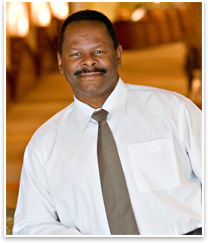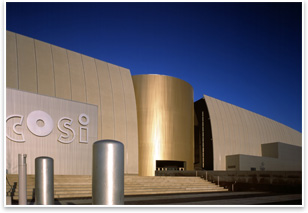| Make the Most out of Your Teaming Partnerships
by Curt Moody, FAIA, NCARB, LEED-AP
Summary: Nowadays, it’s rare for an architecture firm to pursue a major project without including a second or sometimes even third architecture firm to help win the project. While teaming continues to be an increasingly popular, accepted, and, in many cases, necessary, approach, there are several elements to consider before solidifying your teaming arrangement.

Curtis Moody, FAIA.
Do your homework
First and foremost, do your homework so you can create the best team possible. Go beyond the RFQ or RFP to learn about the project and talk to the client and user groups to understand what is needed. Also, learn what the critical issues or “hot buttons” are for the project. Subject matters to discuss include budget, design, and consultant selection, as well as what goals are the most important to the client and end user. Depending on our relationship with the client, for example, we’ve even proposed a teaming arrangement we think is appropriate to see how they’ll react. Then we’re able to determine if we’re heading in the appropriate direction, or if our internal team needs to take a step back and continue brainstorming.

The Ohio State University Recreation & Physical
Activity Center, designed by Antoine Predock, FAIA, in partnership
with Moody Nolan.
What is your goal?
Understand what you want out of the teaming arrangement. Before you identify your partner, define the parameters you are looking for and what you’ve concluded from your research of the project, and recognize the strengths that the potential teaming candidates will bring to the team. Are you looking for a local partner or a firm that will strengthen the overall dynamics? Evaluate what your needs are early on and stay focused on those needs throughout the project.
After a team has been established, our firm will develop a matrix of responsibilities. It is a great communication tool that allows our internal team and teaming partner to have a solid understanding of the roles each member will have. Once agreed to, it’s used as the foundation of the project and positions each member to execute his or her responsibilities properly, whether it’s for the proposal, interview, or actual project. We also find that the matrix is a helpful tool for the client by providing them with a visual explanation of how we’ve organized our team and will manage their project.
Customize the proposal
Once the team and responsibility matrix have been finalized, it’s critical to illustrate clearly the teaming arrangement and present yourselves as one cohesive team to the client. When you have a fragmented team, it’s easy to create confusion, which in turn may decrease your chances of winning the project. Consider customizing the proposal by creating a template for all elements including the résumés, project sheets, and response to exhibit a unified approach.

The Center of Science and Industry complex in
Columbus, Ohio, was a design partnership between Arata Isozaki,
Hon. FAIA, and Moody Nolan.
Solve challenges
No teaming arrangement is perfect, and it’s inevitable that there will be a disagreement at some point. Different cultures and work ethics combined into one are not always a perfect fit. Openly discuss any issues with the teaming partner and recognize the importance of staying on track. Rather than place blame, work together to resolve issues that arise, and, most importantly, avoid conflict in front of the client. Although it’s impossible to change personalities and opinions, make sure there is some level of flexibility and work together to solve the challenges.
As more and more demands are placed on architecture firms to be successful with a project and the clients’ expectations increase, the need for teaming arrangements will only continue to intensify. In the past, many firms could pursue work alone and be successful. However, as it becomes more financially feasible to team and more skill sets are needed to be competitive for projects, these firms must embrace teaming and build relationships with other firms.
|




